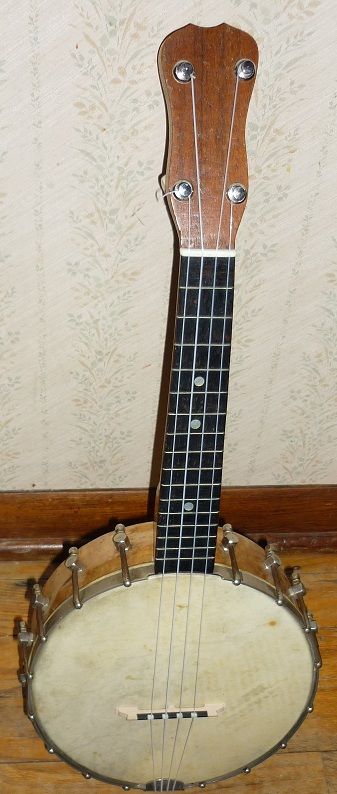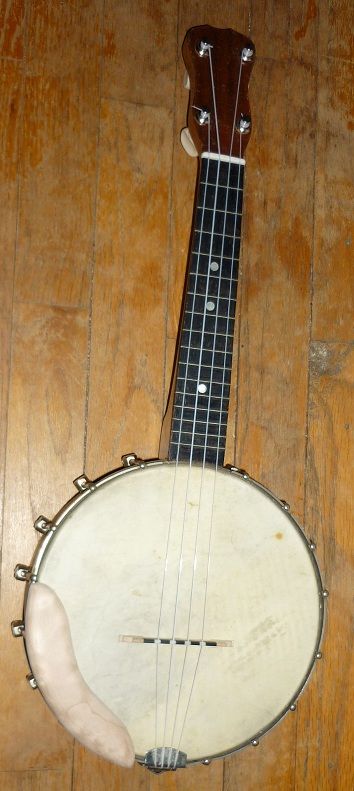Well, actually it was the other day. But, just today was able to take a couple pics. I got this as a partial trade in, and I am really happy with it. It is a 1930's era Concertone. It didn't play very well, as many of them don't. But after a little tinkering, new strings, it is at least now playable. the original nut was rosewood it looked like. I don't think rosewood is nearly dense enough to be used for a nut, so I made a new one from bone. Shaved the bridge a little bit, still keeping a good distance from the head (too low and close to the head, you loose sustain). A new set of strings, and it made a world of difference. Very playable now, and a much brighter tone and not so muddy. I contribute that mostly the new nut. I was kind of suprised, because it has a beautiful birds eye maple veneer on the bucket. After the holidays, I decided to tear it completely down, and do a full restoration on it. I think with a gentle sanding, and a new nitro finish, it will really bring that bird's eye figuring out and be really striking. I have also started an arm guard made from some of the curly maple I had left over from my electric Les Paul uke. You can't really see the figuring in the arm rest, but after the finish on it, it'll pop and be a really nice functional accent. But, it is fun to play now, and I really can't wait to tear it down for a full restoration soon. I'll just enjoy it for a couple months first.. 




Last edited:



